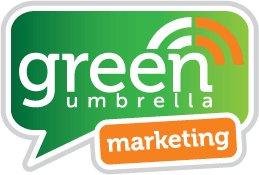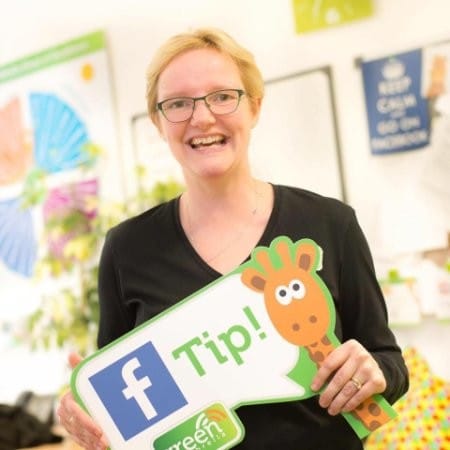The Future of Social Media… Be Human!

The Future of Social Media… Be Human!

Once I had got over the “Oh, look, there is Mari Smith, isn’t she tall!” or “Oh look, Michael Stelzner is much smaller than I expected!”, I got down to some serious note taking over the next three days worth of social media and online marketing workshops.
From the many Facebook Apocalypse workshops (aka: is Facebook dying for business owners – which will be next week’s blog) to the wise words of people who have worked in the industry since the early days, there was one key message throughout each session which was the future of social media is to “be human”. So in this blog, I would break down what it means to be human.
Goodbye B2B and hello P2P

I was listening to Bryan Kramer’s workshop on “How to Humanize your social brand for Better conversions”, and he showed examples of famous brands that inject real personality. One Amazon live chat was spoken Yoda style with a customer, and he also mentioned the KFC diabolical where they recently ran out of chicken.
Holding your hand in the air to say “we have made a mistake” and then going one step further to print their buckets with FCK on the front was a brave move that won the hearts of many.
Not only was the bucket a brilliant move, but the message that came with the visual was so very human you can not do anything but feel compassion for the brand.
“A chicken restaurant without any chicken. It’s not ideal,” the statement continues before apologising to inconvenienced customers and thanking KFC employees. “It’s been a hell of a week, but we’re making progress.”
The ad points viewers to a website with more information about the status of local restaurants. The header of the site reads, “The chicken crossed the road, just not to our restaurants.”
It’s ok to say “be more human”, but as marketers, we have been bred in a certain way. We tend to talk “marketing speak” even though this is not how we would address someone in real life. Many of you reading this blog will not remember Tommy Cooper. He was a very talented magician, but many of his tricks went wrong, and this is what made him so popular. I recall watching his very last TV appearance with my family when I was just 13 years old. Tommy passed away on stage during his act and everyone thought it was just another one of his jokes.
Peter Kay, the comedian from Bolton, is also very successful because he simply tells stories in a very human way. We buy in to his humour because we can relate to his stories and this is what we need to do when it comes to business.
How can we be more human in business?
It’s easy for me to preach to you guys and tell you to just “be more human”, but what does this actually mean when it comes to business? There are two key elements which can make your business more human:-
#1 – Be relateable
Rather than selling your services, why not have the same mindset as Peter Kay. How can you relate to your audience? What questions are they asking? What problems can you solve? Have you put together a full character of your ideal customer (known in the industry as an avatar?).
I am currently working with Vauxhall to deliver a digital workshop to their retailers. One of the exercises that I work through is to test their “live chat” facility. They choose a scenario such as “I am a learner driver, and I am looking for my first car” or “I have just purchased a caravan and need something bigger to pull the load”. You will be surprised how many live chat conversations go straight to the sale process. Asking about what budget they have, can they have your details so that they can ring you to sort out some test drives – very rarely would the person at the end of the live chat start the conversation off with “Congratulations on passing your test”, or “Wow, where are you planning to take your caravan on the first trip?”.
In real life, we would ask these questions, so why do we put a sales hat on the minute we have a potential new customer? Things need to change. We don’t want to be sold at anymore. We are human, so treat us this way.
#2 – Tell stories
Stories have worked for me for many years. If you have been following me for a while then you will know the “beans on toast” story or the “giraffe fart” story. I get tagged in photos of giraffes on Facebook and Twitter on a daily basis, but this is a great hook for people to remind them that I exist. When attending social media marketing world, a colleague was introducing me to some rather famous people and her intro was “This is Julia from Green Umbrella and her business was born from wanting to buy a camper van”. I had forgotten that particular story, but the colleague mentioned it more than once as she found it an inspiring story.
When I am at recruitment based expos or giving talks at recruitment shows, I find that telling stories of my recruitment days helps me bond with my audience. I have a bank of stories that I can tell at any given time, and it simply makes the gap between me and the potential customer just that bit smaller.
What are your stories? I urge you to write down at least three stories that will help you win the day. I don’t mean “sales stories” as to why your business is great but a bank of “relatable stories” that will help bridge that gap between you and your customer.
Some quick wins to be human
#1 – Live chat service
Do you answer your live chat in the same way that you answer the phone? Do you actually have conversations with people, or is the conversation very sales orientated? Do you enjoy humour on live chat? Some live chats give details such as the location and the weather of the caller – can you use this information to warm up the conversation?
#2 – Behind the scenes
Show behind the scenes posts on your social media channels. What is happening right now in your office? Are your colleagues debating whether ketchup should be stored in the fridge or in the cupboard? Keep it real and share this information with your audience. Perhaps share a “fun fact, or something that people don’t know about me” from the members of staff.
#3 – Out of office
Whenever I am out of the office I add a little autoresponder to my emails. Sometimes I ask people to guess where I am going today from these few clues, or perhaps I just tell people to wave at me if they see me stuck on the M6 going North. I also add a little bit of humour to my email signature which usually gets good feedback when people spot it. Fax: Just kidding! (always evokes conversation)
#4 – Change your voicemail
Each day I change my voicemail greeting so that it feels personal. A typical message may be something like “You’ve reached Julia on Tuesday 6th March. I have just returned from sunny San Diego and I am suffering from jetlag. Any tips would be appreciated! In the meantime, please leave a message after the tone and I will endeavour to get back to you when I am wide awake and have consumed lots of coffee”.
My final takeaway about “being human”
My final tip is to have an awareness that not everyone has the same humour as you. They will not all find your stories fascinating, and not everyone will warm to you immediately, and that’s ok. Don’t try and be funny, just be you. Share your knowledge, educate people, keep the message simple and mix up the style. If you are not authentic then people will see through it. Remember, we only buy from people that we know, like, and above all trust. Are you a person that people trust? Are you consistent in your content? Are you continuously thinking of your customer? Do you ask the right questions when people arrive on your live chat? What is your out of office message? Do you change your answer machine every day? Think about your processes, how can you inject more “human” into your everyday life?
Share this!


